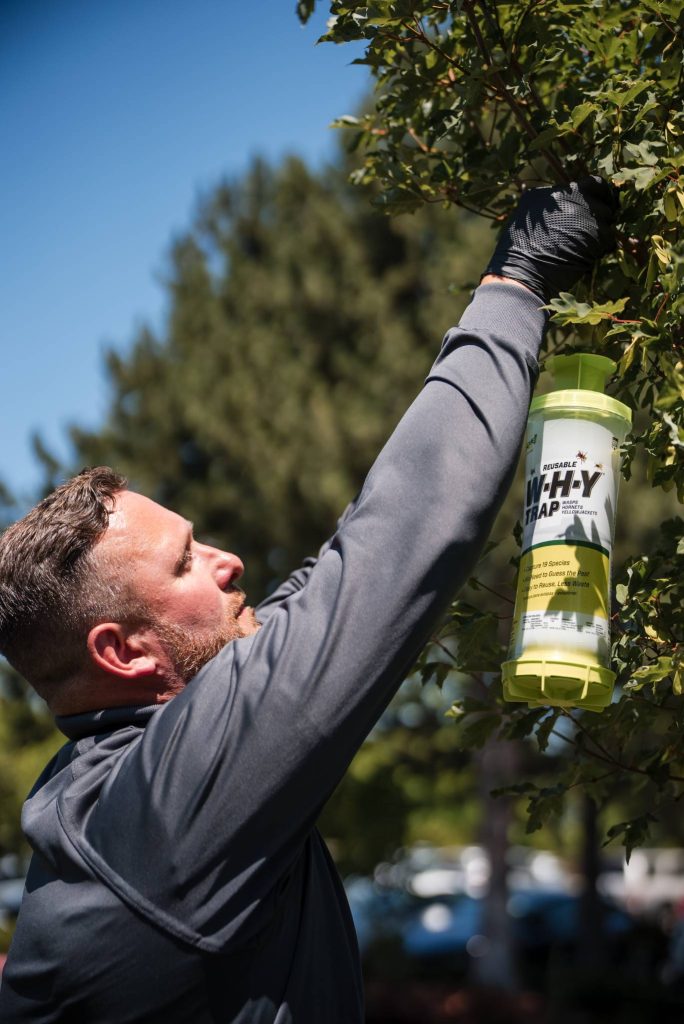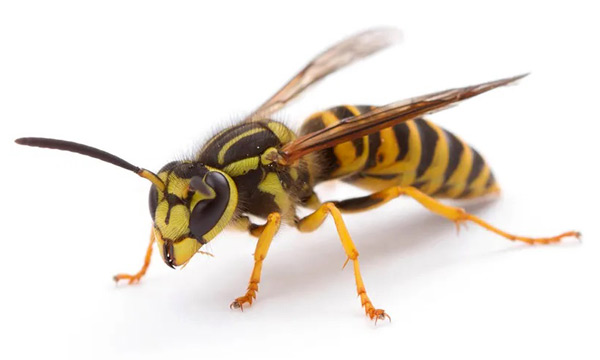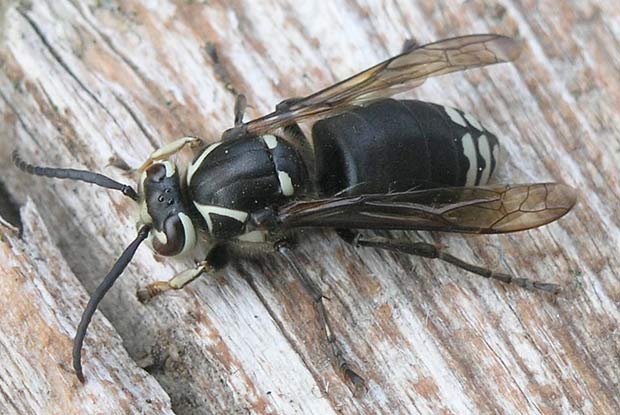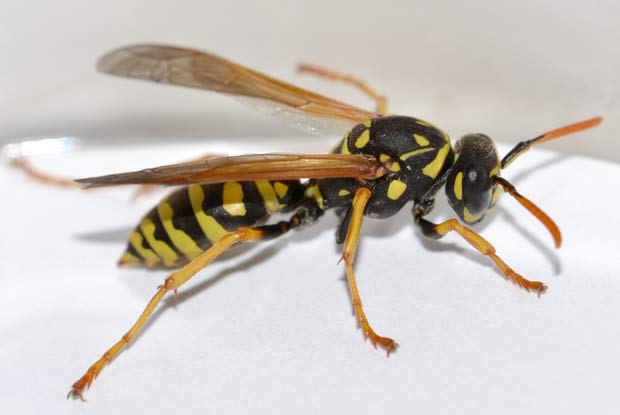Tell Those Bugs to Buzz Off! We Got Your Stinging Insect Solution!
Wasps turning your backyard into their headquarters? Hornets making your porch their personal hangout? Whether they are buzzing a little too close for comfort or setting up nests where they do not belong, we are here to take the sting out of the situation!
Our expert team is ready to identify, remove, and prevent stinging insect infestations—quickly, safely, and effectively. Don’t let these unwelcome guests take over your space. Call us today and reclaim your home or office, wasp-free!
Stinging Insect Control & Prevention
 From bees to wasps, stinging insects can inspire both admiration and apprehension. While they play essential roles in pollination and the ecosystem, they can also pose risks—especially when they establish nests near homes and businesses.
From bees to wasps, stinging insects can inspire both admiration and apprehension. While they play essential roles in pollination and the ecosystem, they can also pose risks—especially when they establish nests near homes and businesses.
Comprehensive Inspection
Our licensed technicians begin with a detailed inspection of your property to identify stinging insect nests. Your firsthand observations of activity and problem areas help us pinpoint nests more efficiently, ensuring a targeted approach.
Effective Treatment & Nest Removal
Once a nest is located, we determine the best course of action for safe and effective removal. Whenever possible, we eliminate the nest immediately, though some locations may require specialized strategies due to accessibility challenges.
Ongoing Prevention & Protection
For properties that experience frequent stinging insect activity, we recommend a recurring preventative service, especially during peak seasons. Proactive treatments help reduce the likelihood of reinfestation and ensure long-term protection.
Our team has the expertise and tools to safely and efficiently eliminate active nests, often within hours of your call. Don’t let stinging insects take over—contact us today for fast, professional service!
Expert Stinging Insect Control Services
Stinging insects can be more than just a nuisance—they can pose a real danger when they nest in high-traffic areas. From painful stings to unexpected nests in inconvenient spots, these pests can disrupt outdoor activities and threaten your family’s safety. Fortunately, our professional pest control services offer fast, effective, and safe solutions to eliminate stinging insect infestations and keep your property protected.
- Quarterly & Bi-Monthly Programs
- Target Pests: Ants, spiders and various other crawling insects
-
Service Includes:
- Exterior perimeter inspection and application for crawling insect control
- Removal of accessible wasp nests on the structure of your home
- Sweeping of spider webs followed by an overhead application for spider control
- Interior services as needed
- Quarterly & Bi-Monthly Programs
- Target Pests: Rats, mice, ants, spiders and various other crawling insects.
-
Service Includes:
- Exterior perimeter inspection and application for crawling insect control
- Removal of accessible wasp nests on the structure of your home
- Sweeping of spider webs followed by an overhead application for spider control
- Service exterior rodent bait stations and inspect for potential entry points
- Interior services as needed
- Quarterly & Bi-Monthly Programs.
- Target Pests: Rats & Mice.
-
Service Includes:
- Exterior perimeter inspection for potential entry points, nesting areas or food sources.
- Seal up identified entry points to prevent the rodents from accesses the interior of your home.
- Service exterior and interior rodent bait stations.
- Interior services as needed.
Identification
Yellowjackets: Aggressive & Persistent Stingers
 Yellowjackets are a particularly aggressive species of wasp, notorious for showing up uninvited to outdoor gatherings, especially around barbecues and sugary drinks. Unlike honeybees, which can only sting once, yellowjackets can sting multiple times, making them a significant nuisance and potential danger to people and pets.
Yellowjackets are a particularly aggressive species of wasp, notorious for showing up uninvited to outdoor gatherings, especially around barbecues and sugary drinks. Unlike honeybees, which can only sting once, yellowjackets can sting multiple times, making them a significant nuisance and potential danger to people and pets.
Identifying Yellowjackets: Yellowjackets are easily recognized by their bright yellow and black markings, rapid flight patterns, and aggressive behavior. Their diet includes sugars from nectar and fruit, as well as proteins from meat and other insects, making them highly attracted to human food sources.
Life Cycle & Colony Growth:
- Spring: Overwintering queens emerge in late spring, searching for suitable nesting sites.
- Early Colony Development: The queen builds an initial brood of 30 to 50 cells, nurturing the first generation of workers over a period of 18 to 20 days.
- Peak Colony Size: By mid to late summer, colonies can expand to up to 5,000 workers, making them highly active and aggressive.
- Fall & Overwintering: As temperatures drop, most of the colony dies off, leaving behind newly developed queens who seek shelter to overwinter and restart the cycle the following spring.
Because of their territorial nature and painful stings, yellow jackets can be a serious threat when they nest near homes, businesses, or high-traffic outdoor areas. Professional removal is strongly recommended to safely eliminate active nests and reduce the risk of stings.
Bald-Faced Hornets: Aggressive Aerial Defenders
 Despite their name, bald-faced hornets are actually a species of wasp, not a true hornet. They are best known for their large, papery nests, which can grow to the size of a basketball or larger. Easily recognized by their bold black-and-white markings, large body size, and aggressive nature, these stinging insects are a formidable presence in late summer.
Despite their name, bald-faced hornets are actually a species of wasp, not a true hornet. They are best known for their large, papery nests, which can grow to the size of a basketball or larger. Easily recognized by their bold black-and-white markings, large body size, and aggressive nature, these stinging insects are a formidable presence in late summer.
Painful Stings & Unique Defense Mechanisms:
Bald-faced hornets can sting multiple times due to their smooth, elongated stingers. Unlike many other wasps, they also possess a unique defense mechanism—they can spray venom from their stingers into the eyes of perceived threats, causing intense irritation.
Colony Growth:
Bald-faced hornet colonies typically reach up to 700 workers but do not become highly active until late summer.
Nesting Locations: Their nests are usually at least three feet above ground, often found in trees, bushes, or attached to buildings and other structures.
Diet:
They are omnivorous, feeding on a variety of insects such as spiders, flies, and caterpillars, making them valuable natural predators despite their aggressive nature.
Due to their territorial behavior and painful stings, bald-faced hornets can pose a significant threat when they nest near homes or high-traffic areas. Professional removal is strongly recommended to safely eliminate active nests and minimize risks.
Paper Wasps: Small Nests, Big Presence
Paper wasps are easily recognized by their long legs, bright yellow-and-black markings, and distinctive open-cell nests, which lack a protective outer shell. While these wasps can be beneficial predators, helping to control populations of other unwanted insects, they can also become territorial and occasionally aggressive toward humans, particularly when their nests are disturbed. Nesting Habits & Behavior
Nesting Habits & Behavior
- Heat-Seeking Builders: Paper wasps prefer to build nests in warm, sheltered areas that are not directly exposed to sunlight
- Small Colony Structure: As semi-social insects, their nests are relatively small, typically containing fewer than 50 workers
- Common Nesting Sites: Their golf ball-sized nests are often found under eaves, in roof structures, or tucked into other sheltered spots around buildings
Natural Pest Control & Hierarchy
- Ant-Repelling Abilities: Paper wasps secrete a chemical at the base of their nests that naturally deters ants, preventing them from invading their space.
- Queen Selection: Unlike some wasp species, all female paper wasps have the ability to lay eggs. However, the dominant, most aggressive female typically assumes the role of queen, leading the colony.
Risks
The Risks of Stinging Insects
While many stinging insects, such as bumblebees, honeybees, and mud daubers, are generally non-aggressive unless provoked—and even beneficial to the environment—others, like yellowjackets and bald-faced hornets, are highly aggressive. When these insects nest near homes or businesses, they pose a serious risk to people and pets.
 Where Stinging Insects Nest:
Where Stinging Insects Nest:
- Nests can be found in a variety of locations, including underground, in bushes and trees, within construction voids, and even inside walls or ceilings.
- Indoor nests are particularly concerning, as the insects can chew through drywall, breaking into living spaces and creating a hazardous situation.
Common Behaviors of Stinging Insects:
- Active Foragers – Wasps, hornets, and other stinging insects continuously search for food and building materials, especially in the spring and summer months when colonies are growing.
- Long-Range Flyers – Many stinging insects can travel up to a quarter mile from their nest, meaning increased insect activity around your property may be due to a nearby but unseen colony.
- Drawn to Available Resources – Even if they aren’t nesting on your property, stinging insects may hover around structures, gardens, eaves, and open areas if they find suitable food or materials.
Limitations of Treatment:
- Professional treatments effectively eliminate active nests and deter new ones, but they do not completely eliminate natural foraging behavior. Because stinging insects may travel from off-site colonies, occasional flying activity may still be observed, even after treatment.
If you suspect stinging insect activity near your home or business, contact us for expert identification and removal to ensure a safer environment for you and your family.
Stinging Insect Control Methods
Our A&A Technicians have the expertise and tools to quickly and effectively eliminate active stinging insect nests. Our process begins with a thorough inspection of your property to locate nests and assess the situation. If you have noticed high activity in specific areas, be sure to share your concerns with our technician for a more targeted approach. Customized Treatment & Nest Removal: The location of the nest will determine the best treatment method and whether removal is possible. While we always strive to completely eliminate and remove the nest for immediate results, some locations may make physical removal impractical. In these cases, we ensure the colony is neutralized to prevent further activity.Prevention Tips
Stinging Insect Prevention Tips
While some preventative measures can help reduce stinging insect activity around your property, true control is only achieved by locating and eliminating the nest. Here are a few steps you can take to minimize the risk of infestations:
Take Action Early – As soon as you notice yellowjacket or bald-faced hornet activity, contact us right away. Our wasp control experts will inspect, treat, and monitor the situation to ensure complete elimination.
Trim Vegetation Around Your Home or Business – Keeping vegetation around your property trimmed and well-maintained can help reduce the likelihood of stinging insects nesting nearby. Overgrown trees, bushes, and dense shrubs provide ideal harborage, while clear landscaping allows for easier nest detection during inspections.
Minimize Accessible Water Sources – Especially during the dry months of the summer and fall, any accessible water source can attract stinging insects. A dripping outdoor faucet, or standing water in planters can serve as a hydration stop for wasps and hornets. Regularly check and address these sources to discourage activity.
Stay Calm Around Stinging Insects – If you notice a nest or wasps foraging nearby, do your best to remain calm. While it may be instinctive to wave your arms or move suddenly, these actions can trigger an aggressive response. Instead, move away slowly and avoid making sudden movements that could be perceived as a threat.
Avoid DIY Treatments – Attempting to remove a wasp or hornet nest yourself can be dangerous. Many nests are hidden in inaccessible areas, making store-bought sprays ineffective. We often arrive at homes or businesses where people have used multiple cans of wasp spray—only to find that the yellowjackets are still active. Save time, money, and unnecessary stings by letting professionals handle the problem safely.
Do not let stinging insects take over your outdoor space—call us today for professional control and peace of mind!

